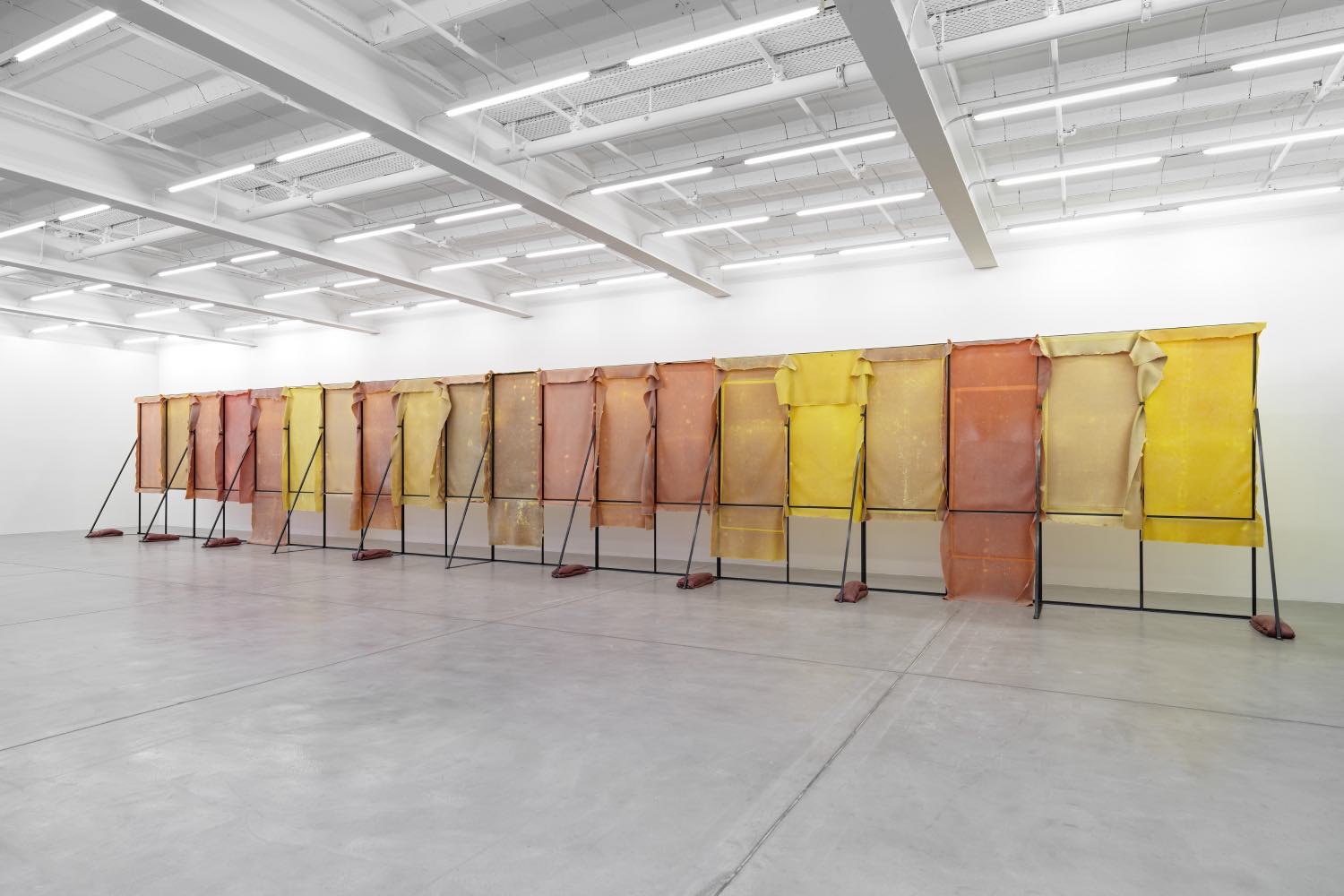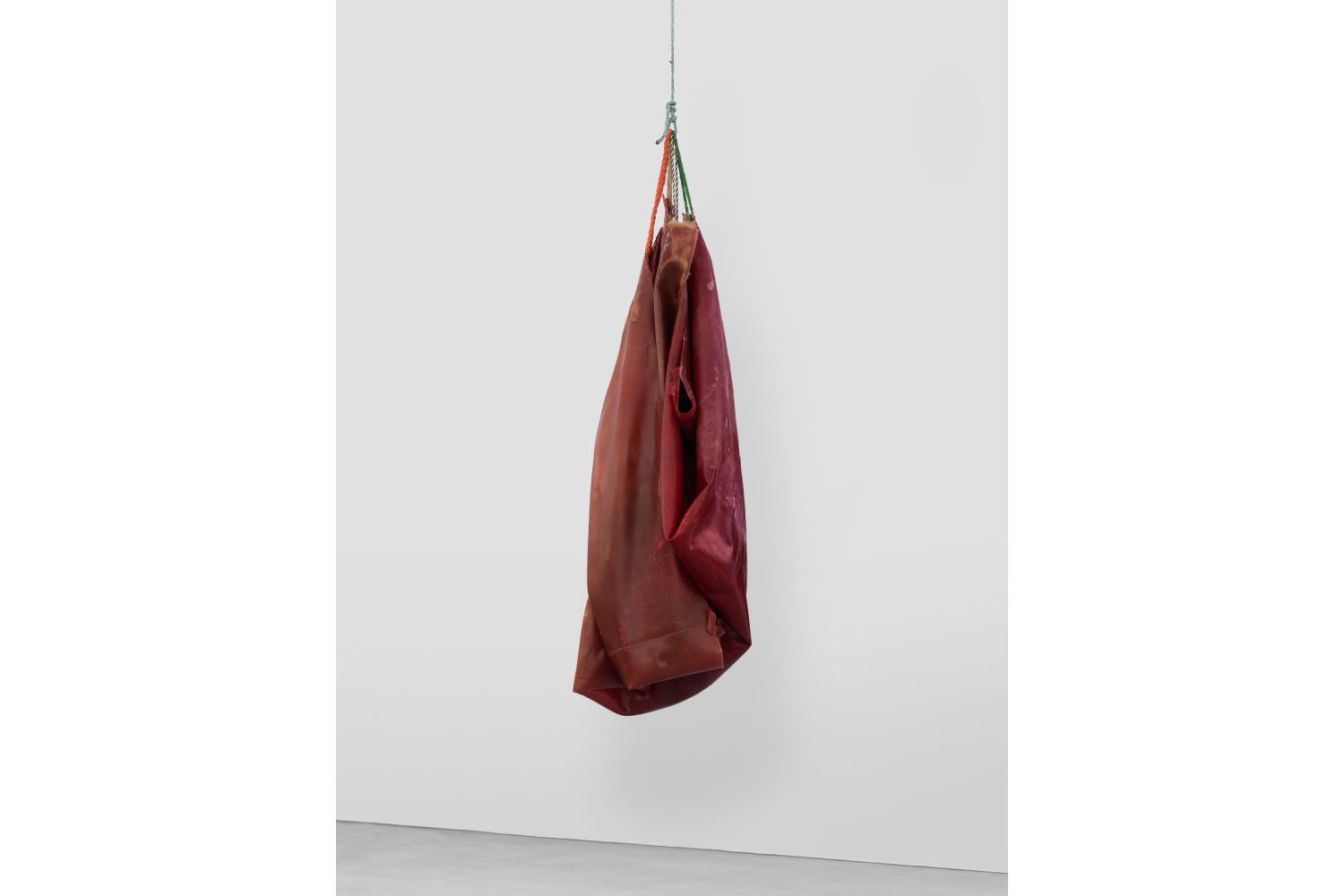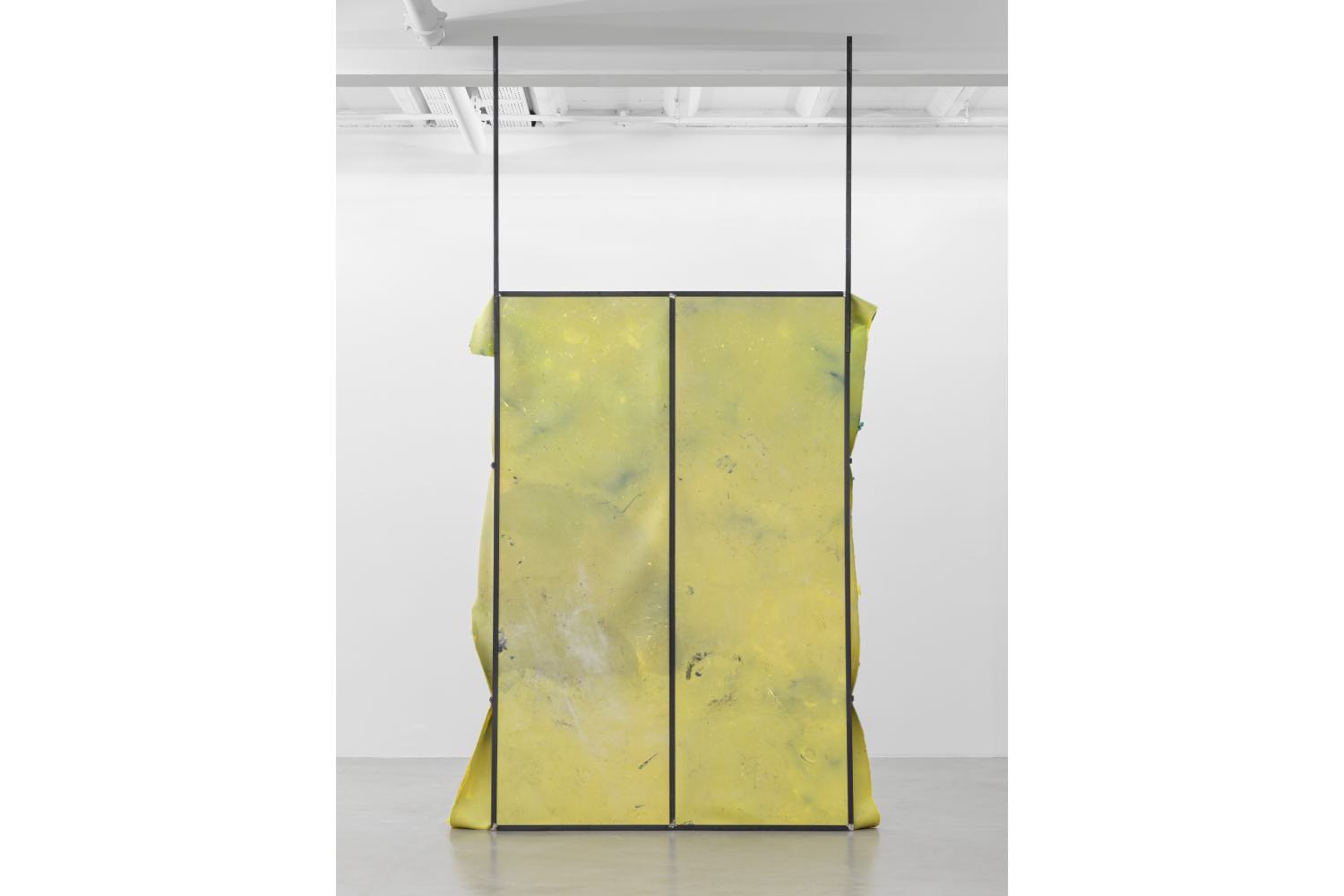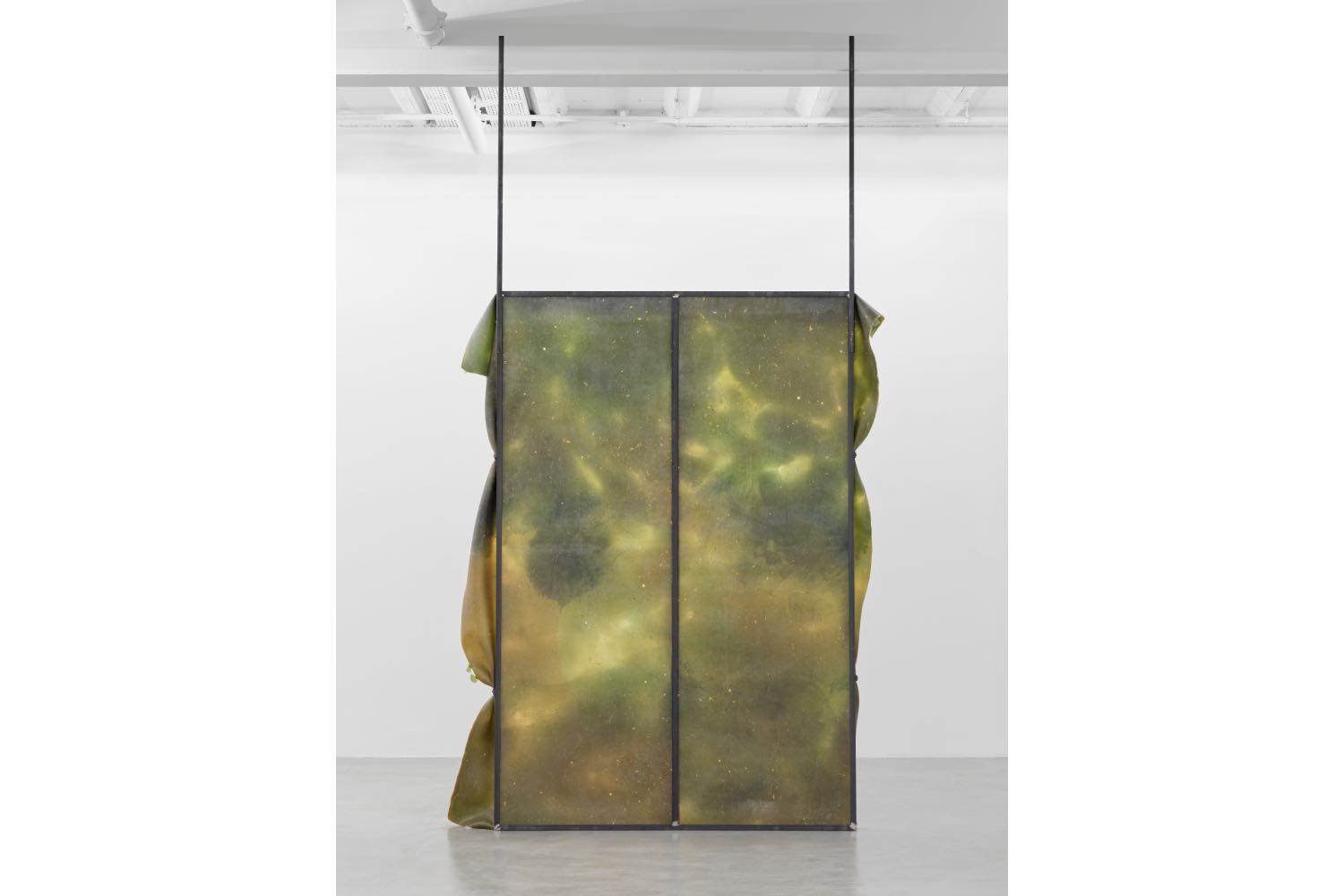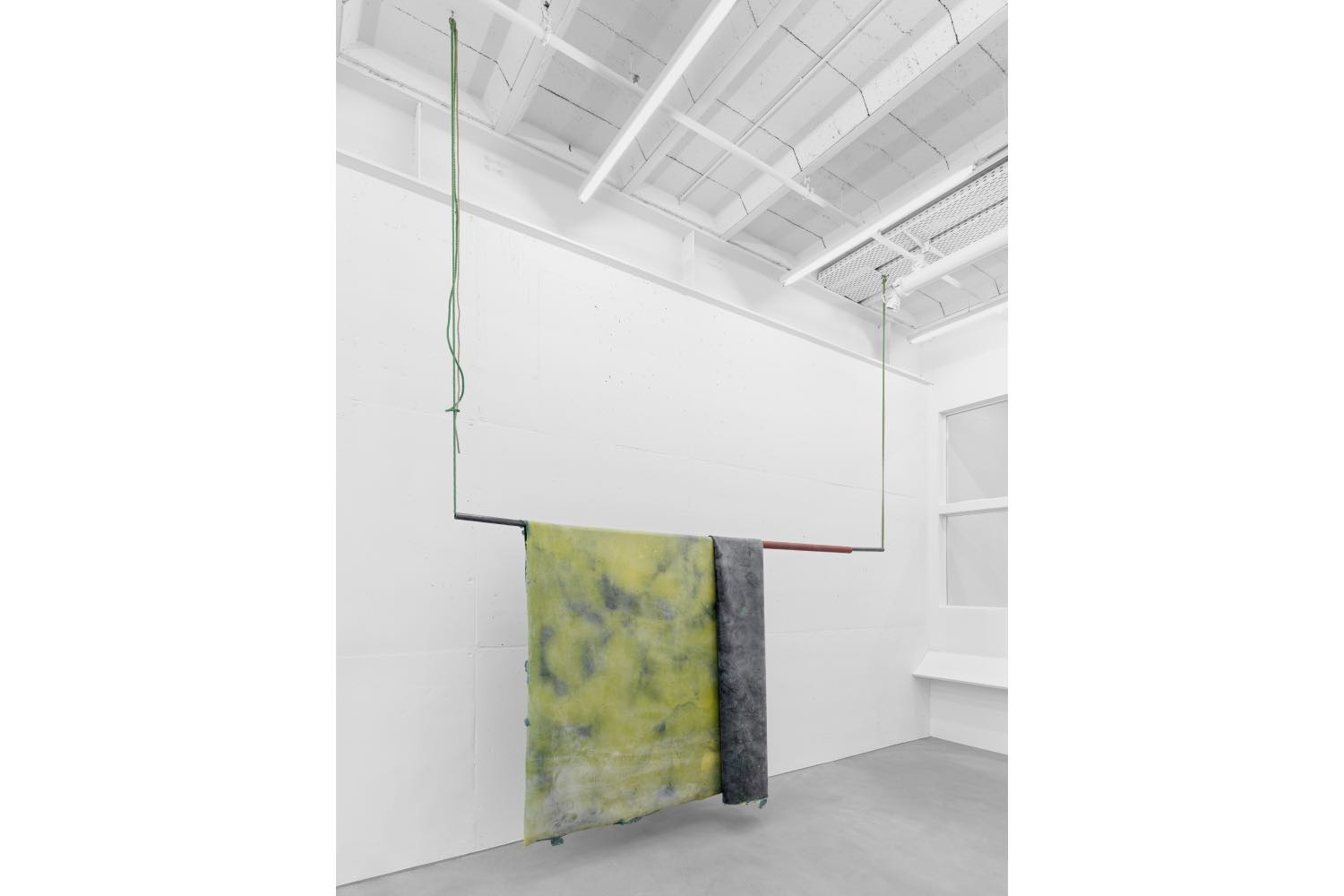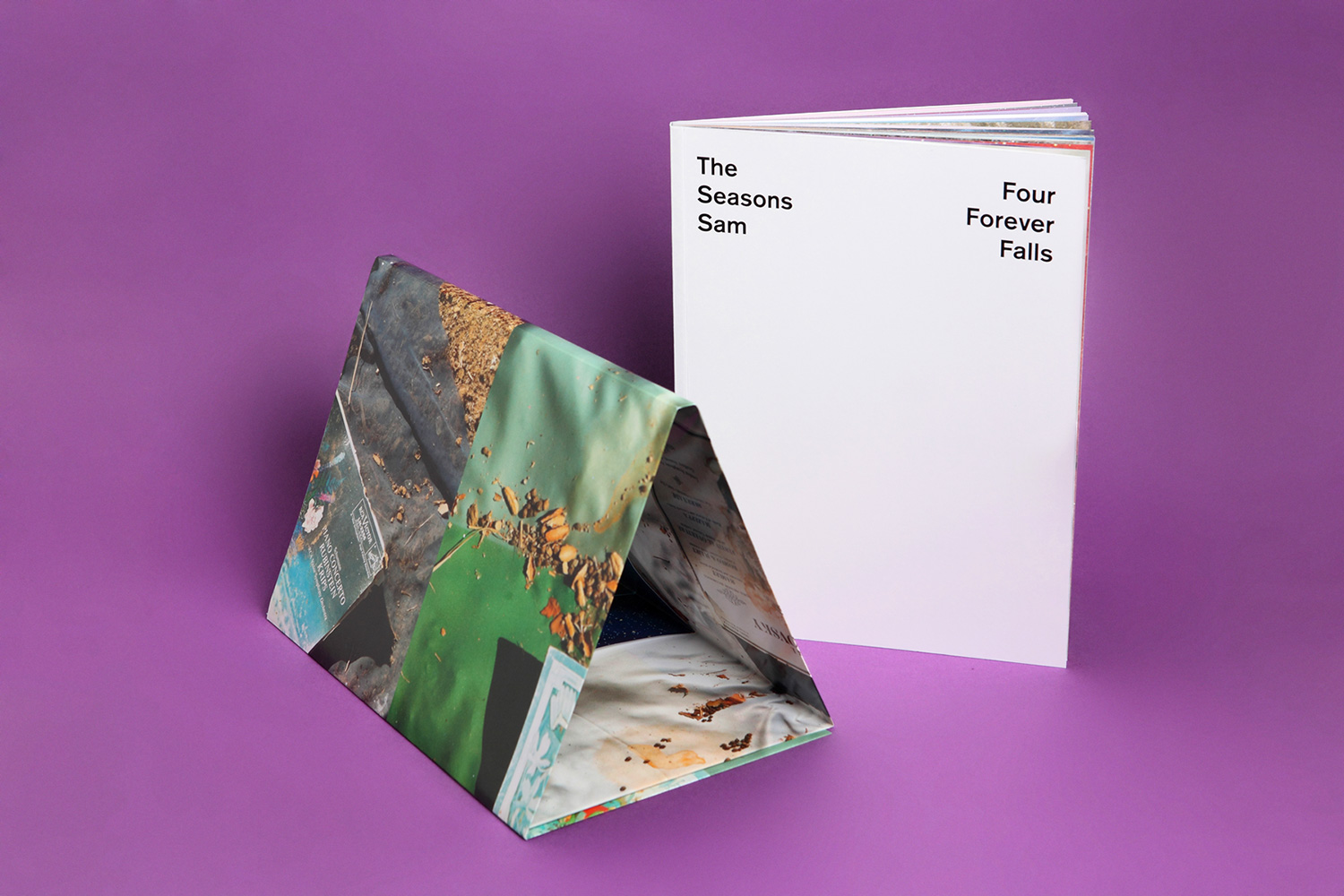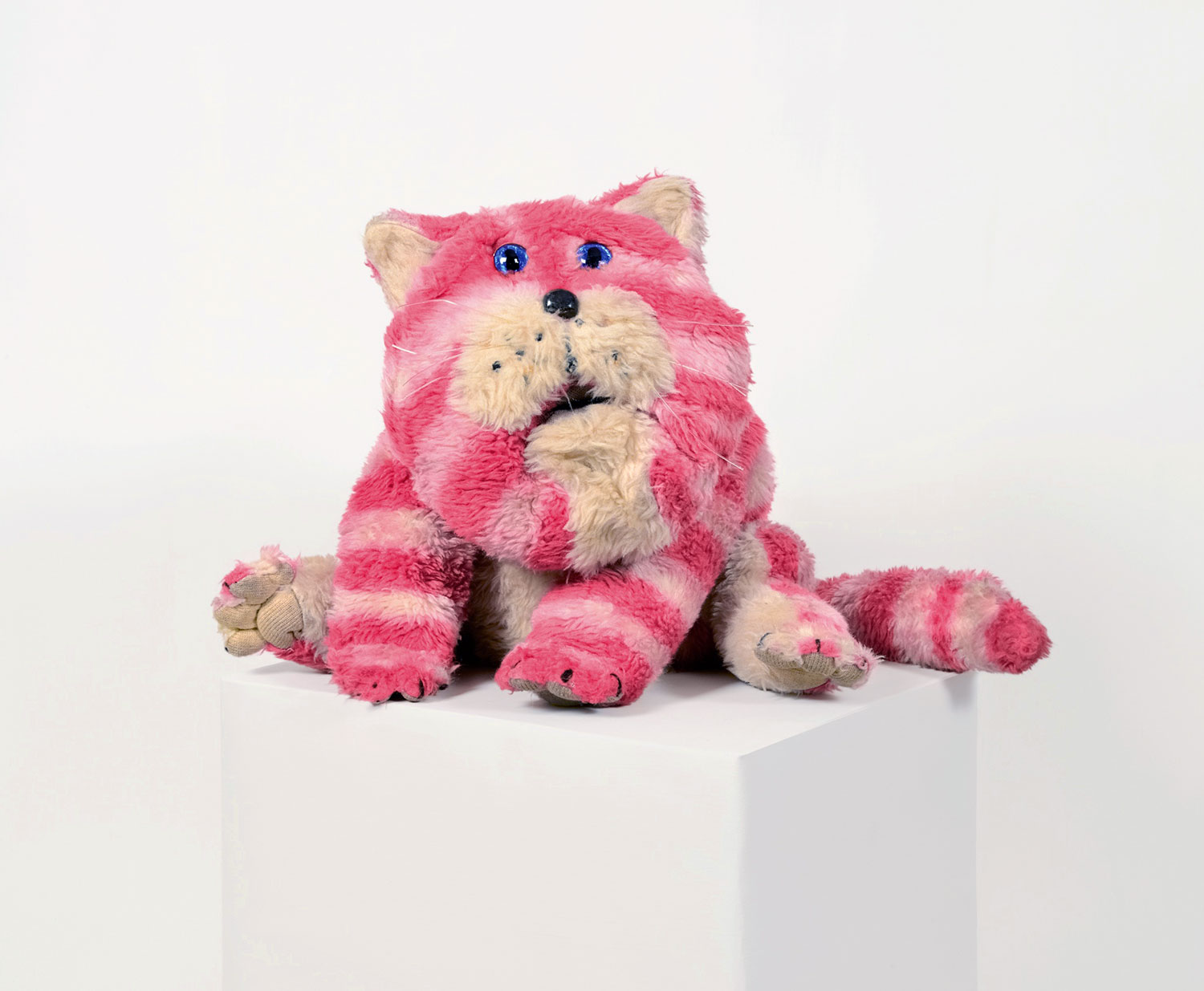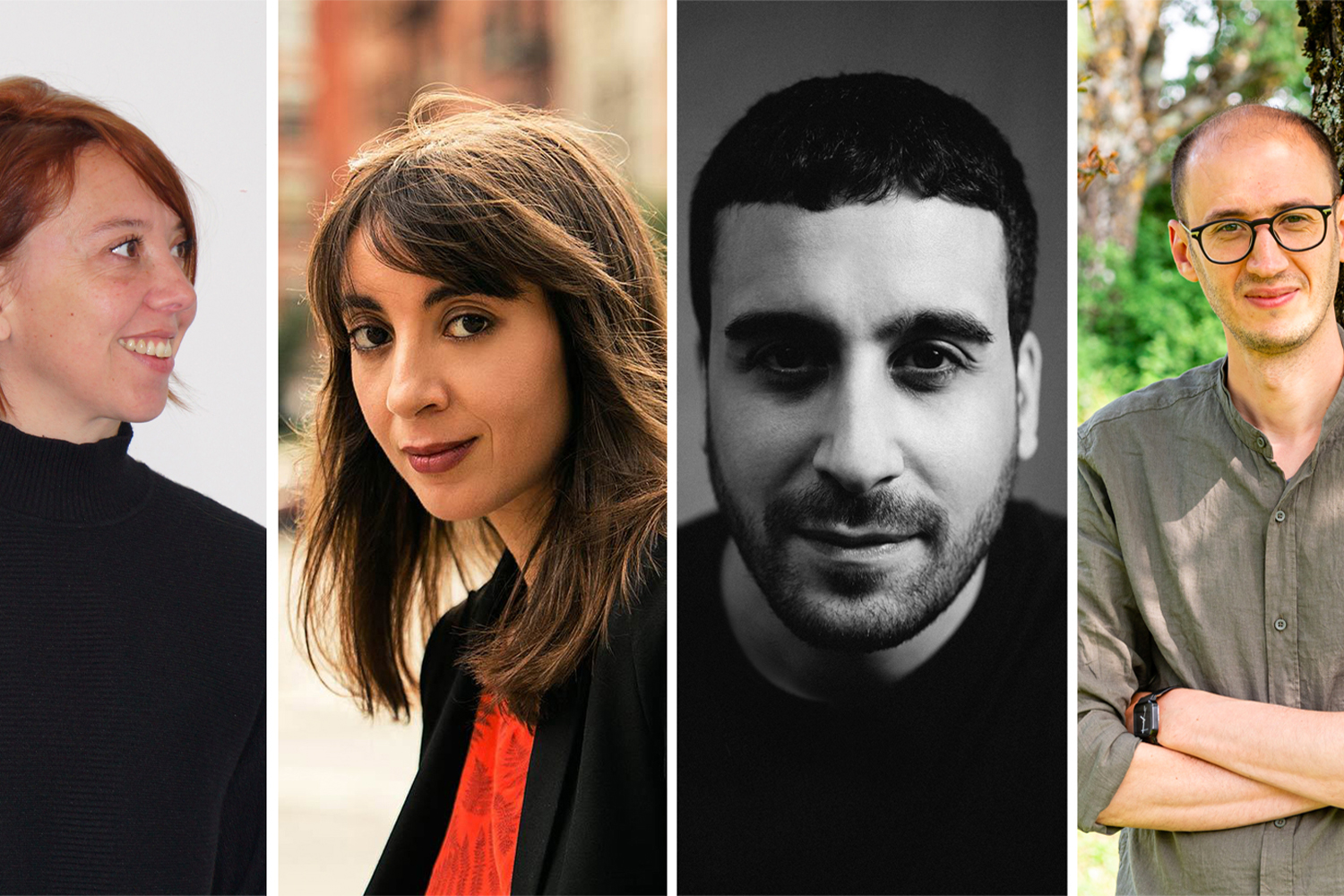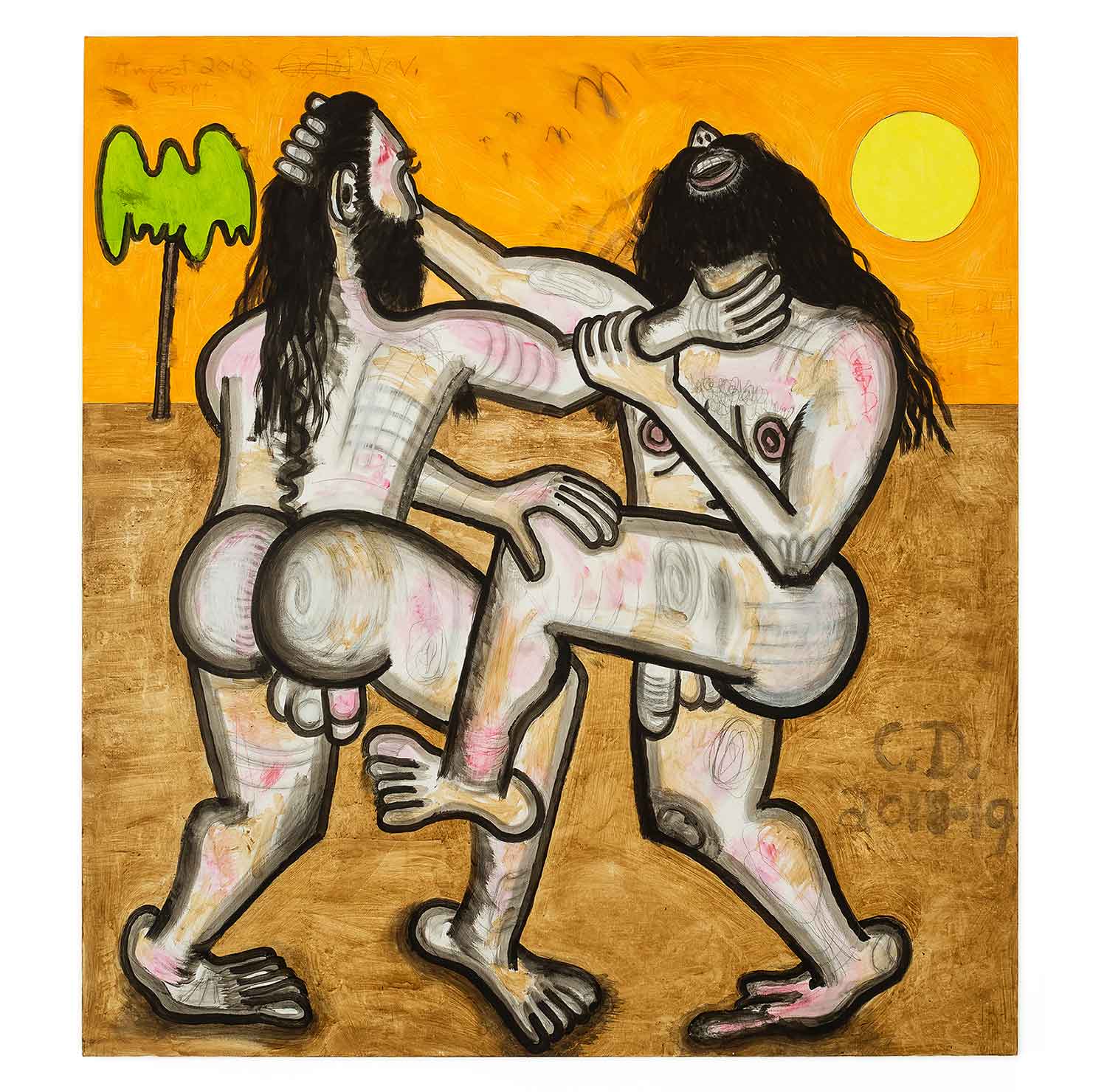Liesl Raff’s exhibition “A Corridor, a Room, and Four Dens” opened in early February in the industrial expanse of Eva Presenhuber’s Zurich-based Maag Areal location. Raff uses a range of dense materials — like metal or sandbags, along with more pliable objects like latex, rope, or jute — to present ten large-scale sculptural works in four thematic groupings. The connotations of hard to soft, and their emotional implications, are immediately evident by their close juxtaposition to one another, but the emphatic slippage of support and framework seems to be the conceptual underpinning of the work.
From the get-go, bodily metaphors are inescapable within the work, as are tensions related to emotional and physical labor. The first sculpture, Crease (2024/2025), is encountered at the entrance, which is also right by an enclosed office space. One notices the frayed or unclean edges immediately. Broadly speaking, it is a sheet of thick, pigmented latex doubled over and then folded in half, as if out of exhaustion, carried by a metal tube that is suspended by a rope that is attached to the ceiling. There is a kind of putrid green or dilapidated yellow look to the latex, while the rope that runs through the hollow of the metal rod is an artificially bright green against the staid metal. Despite so few apparent gestures within Crease, it reveals the multiple layers of need that can be so ubiquitously applied to everyday life: rest or maintenance, for instance. The sense of precarity instills a subtle lack of balance that resonates throughout the exhibition.
The technical process for creating the thick latex sheets is exacting; according to the press release, the artist “spends long hours layering liquid latex on the floor, pushing and pulling it into every contour of a three-by-four-meter asymmetrical frame.” From there, the latex layers solidify into semi-translucent sheets wherein the natural pigments settle and the object becomes something like a skin. Each sheet of latex, a total of around thirty for the exhibition, creates its own cosmic or marble-like effect on the surface. Once finished, talcum powder — with its white, ashy appearance — is applied for durability, though I’m unsure as to how or why. In Crease, for instance, the powder is less evenly dispersed, but as it collects toward the bottom of the hung latex, residual traces that seem like a shoe or fingerprints are noticeable, an indication of the human presence the object needs in order to exist in the first place.
The monumental piece in the main exhibition hall, Corridor (Variation 2) (2024/2025), is a commanding sequence of twenty towering metal frames, held down by sandbags, with the skin-like latex sheets fastened to the frame by metal clamps. At first sight, the reverse of the sculpture is encountered; the untrimmed latex-like hanging appendages and bodily excess are left in juxtaposition to the tautly stretched and smooth surface that is only visible from behind the work, where one must walk to encounter a cleaner, more neatly framed vantage point. There, the colors are brighter or healthier in appearance, with tones of yellow, pink, and warm neutrals, and the applied talcum highlights the surface’s nuances. As I stared, I began to notice discrepancies in the sequence; small tears or holes in the surface let in light from the other side. Realizing the imperfections of such labored work does have a kind of rewarding quality when the sameness becomes beside the point.
Four works, Crush (1–4) (2025), are similar in stature to Corridor but supported by metal attachments that extend to the ceiling rather than being weighed down by sandbags. The full-length frames for each piece are also diptychs, held together by one frame with a split in the middle that supports a comparatively massive sheet of stretched latex. Each latex sheet in Crush is quite beautiful in its color and effect, with a celestial or Impressionistic quality in strokes and surfaces, and their individual uprightness has a stronger impression than the collective sequence of Corridor.
Walking behind and around each sculpture, the tension of the gathered latex culminates at the center, and the scale of their clamped folds, thicknesses, and seemingly unruly and untrimmed excess betrays the laborious push and pull implicit to their reality, in contrast to the tame, presentable effort one might read at first glance. In one sense the tone of the work is polite — framed by well-constructed materials that create a rigid, durable support system of uprightness, fastening, and constriction — whereas the latex becomes something more to get lost in, a roaming engagement for the eye.

